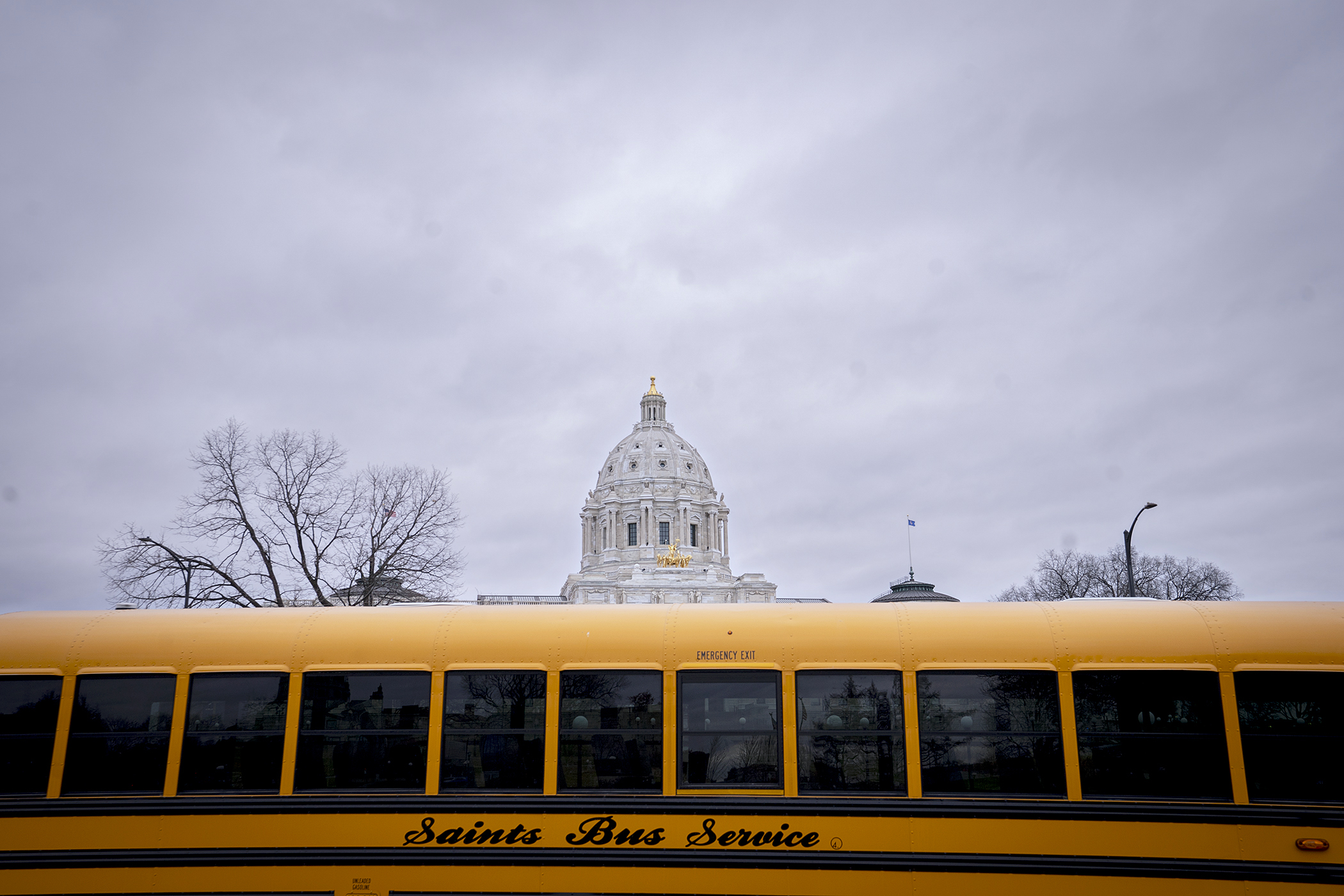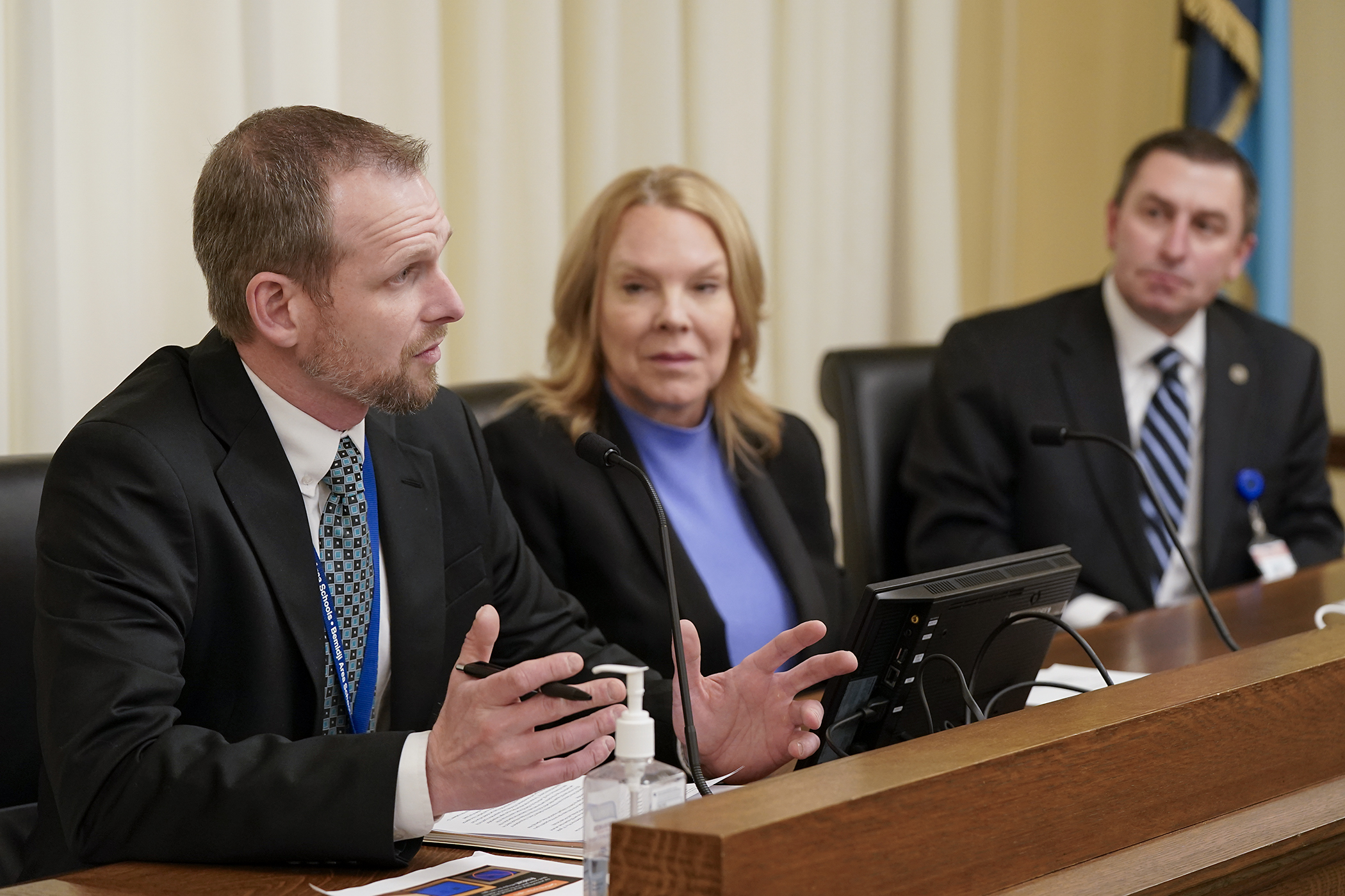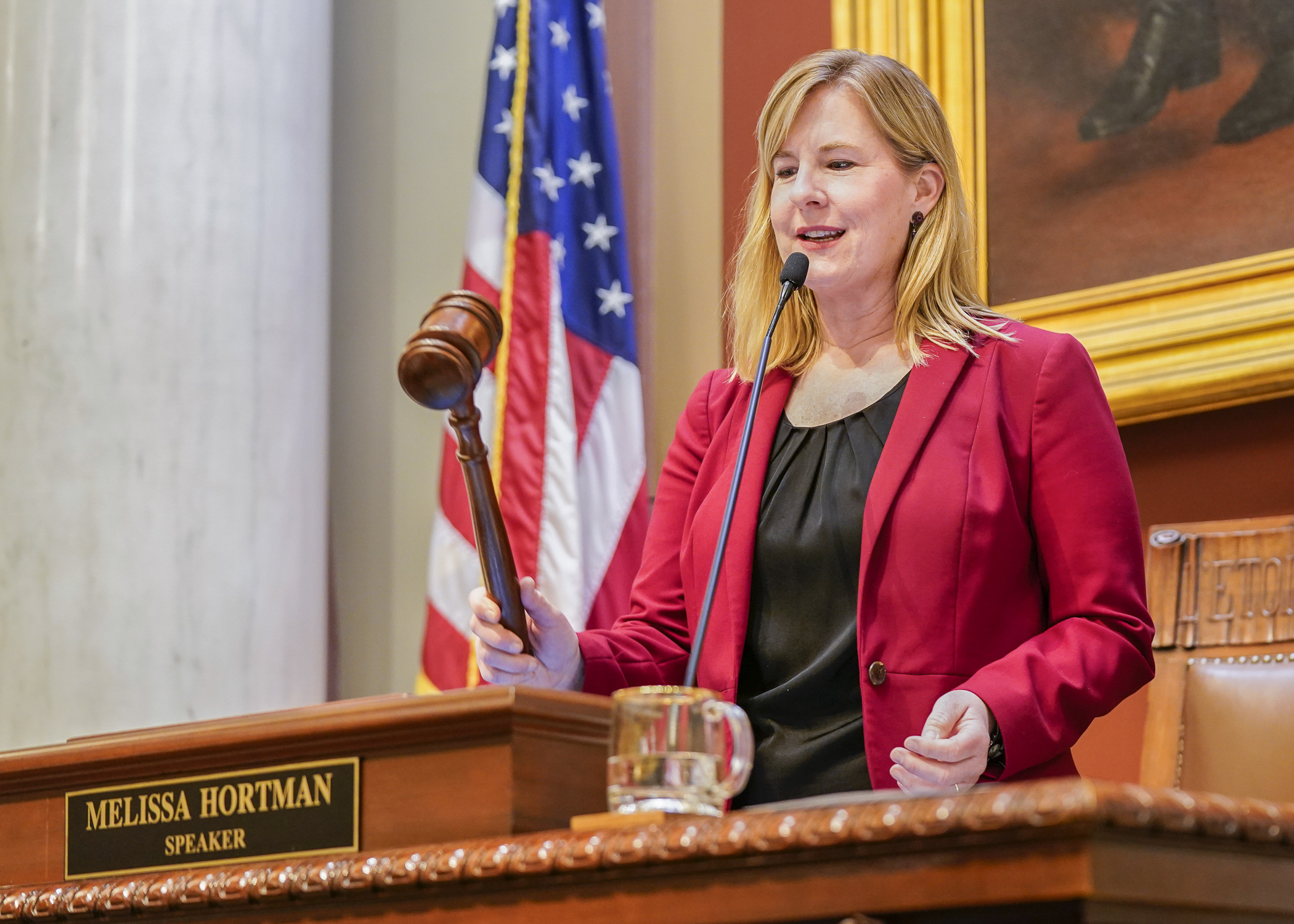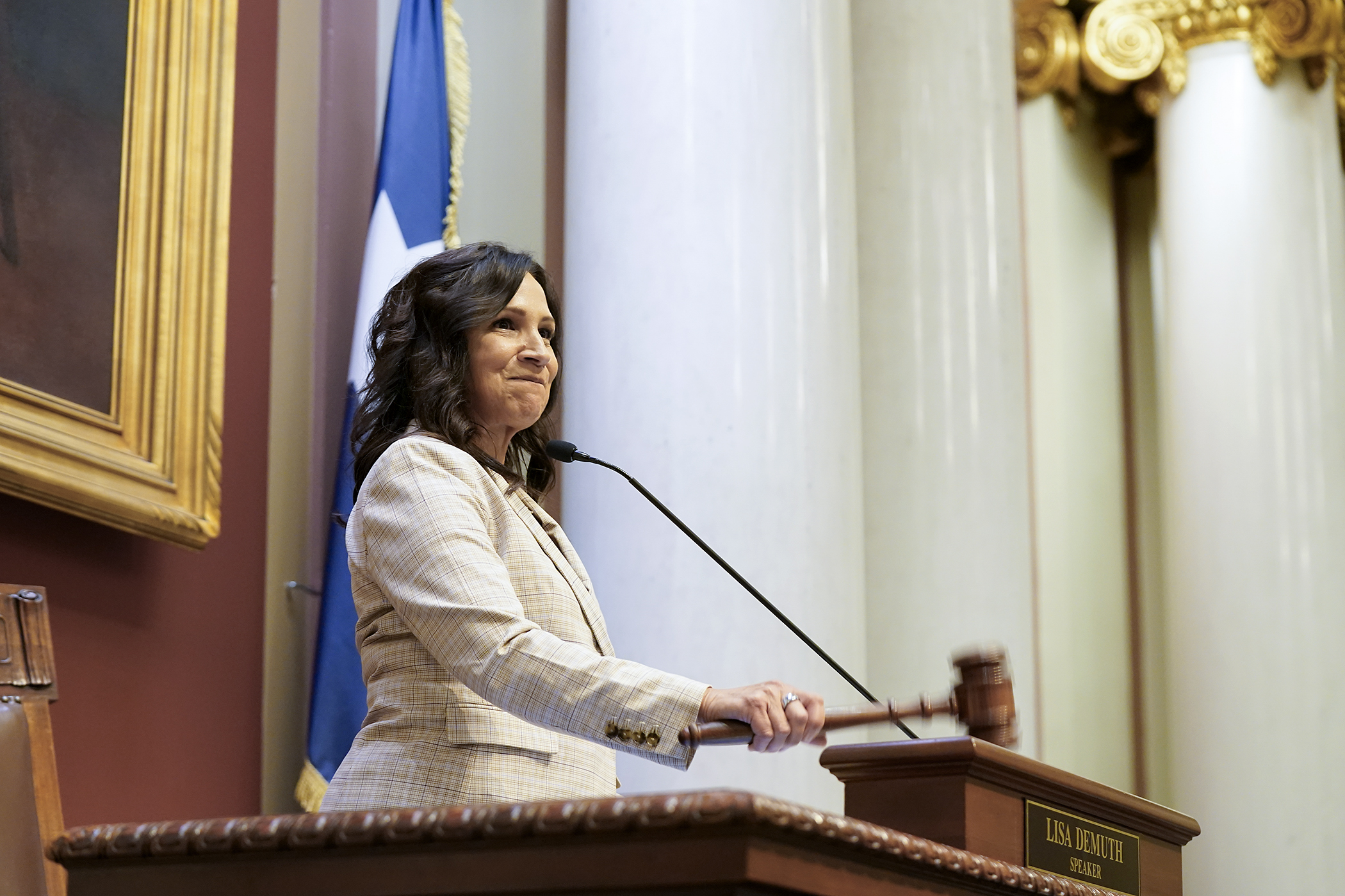Long bus rides, short on funds: House bills seek school transportation fix

The 825-square-mile Bemidji Area School District has about the same number of students as the Richfield School District. If overlaid on a map of the Twin Cities, it would stretch from Albertville to Shakopee over to Rosemount and then up to Stillwater.
Buses in the Forest Lake Area School District travel more than 5,500 miles every school day in the 220-square-mile district, the distance between Key West, Florida and Anchorage, Alaska.
Yet each school district receives the same amount of per-pupil transportation funding as Richfield, a first-ring Twin Cities suburb whose district footprint is 7.5 square miles.
School districts that cover large geographical areas in Minnesota face a funding gap between their transportation expenses and the dollars they receive from the state, an issue that more densely populated districts don’t face.
 Bemidji Area Schools Superintendent Jeremy Olson testifies in the House Education Finance Committee Feb. 18 in support of two bills to increase pupil transportation funding, sponsored by Rep. Patti Anderson and Rep. Josiah Hill. (Photo by Michele Jokinen)
Bemidji Area Schools Superintendent Jeremy Olson testifies in the House Education Finance Committee Feb. 18 in support of two bills to increase pupil transportation funding, sponsored by Rep. Patti Anderson and Rep. Josiah Hill. (Photo by Michele Jokinen)However, a transportation sparsity component provides additional funding to help schools with the higher expenses of transporting students over large geographic areas, but it’s still nowhere near enough.
[MORE: Estimated transportation sparsity adjustment in 2025-26 school year]
Two bills, HF52 and HF53, set out to correct that discrepancy by increasing the sparsity aid large geographical districts receive from 35% to 70% of a school district’s unfunded amount beginning in fiscal year 2026. The funding was increased from 18% to 35% in the last biennium.
On Tuesday, the House Education Finance Committee laid both over for possible inclusion in a larger omnibus bill.
Large school districts are covering the funding gap by taking money from their General Fund to cover transportation costs, causing districts to cut programs and leave students behind, said Rep. Josiah Hill (DFL-Stillwater), who sponsors HF53.
“This is really, really important because these school districts are being harmed," said Rep. Patti Anderson (R-Dellwood), who sponsors HF52. "They’re losing money that’s coming out of the general education formula.”
To cover the discrepancy between the district’s transportation costs and state funding, Superintendent Steve Massey said the Forest Lake district uses $500,000 from its General Fund every year. The district has reduced its bus routes by eight to offset the deficit, which has resulted in bus routes longer than an hour and parents driving their children to school instead.
“The issue is an issue of fairness," he said. "Half a million dollars is the equivalent to seven teachers or critical services we are not able to provide for our students."
Related Articles
Search Session Daily
Advanced Search OptionsPriority Dailies
Speaker Emerita Melissa Hortman, husband killed in attack
By HPIS Staff House Speaker Emerita Melissa Hortman (DFL-Brooklyn Park) and her husband, Mark, were fatally shot in their home early Saturday morning.
Gov. Tim Walz announced the news dur...
House Speaker Emerita Melissa Hortman (DFL-Brooklyn Park) and her husband, Mark, were fatally shot in their home early Saturday morning.
Gov. Tim Walz announced the news dur...
Lawmakers deliver budget bills to governor's desk in one-day special session
By Mike Cook About that talk of needing all 21 hours left in a legislative day to complete a special session?
House members were more than up to the challenge Monday. Beginning at 10 a.m...
About that talk of needing all 21 hours left in a legislative day to complete a special session?
House members were more than up to the challenge Monday. Beginning at 10 a.m...